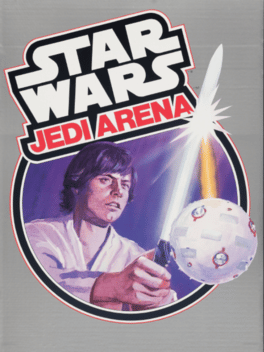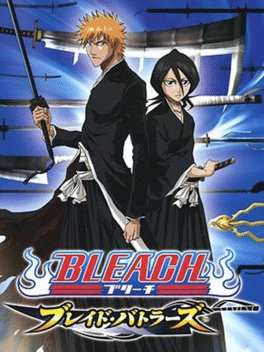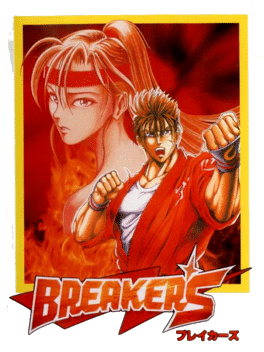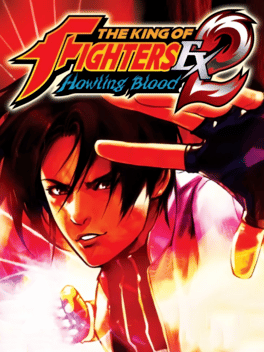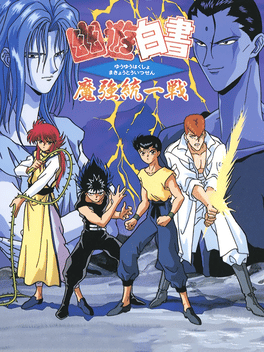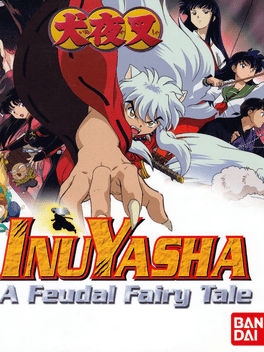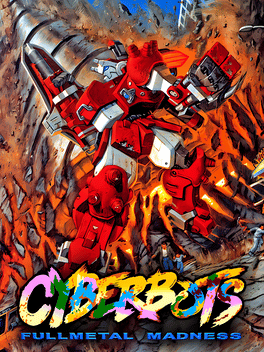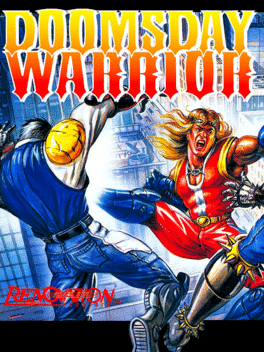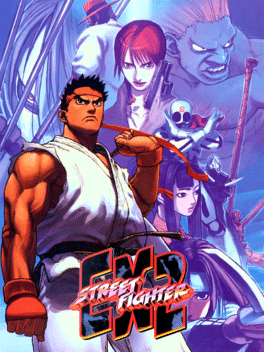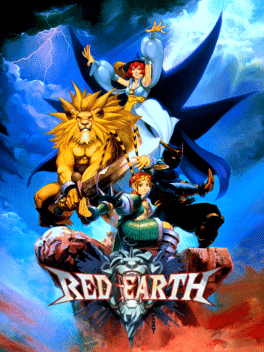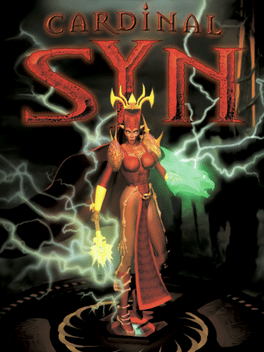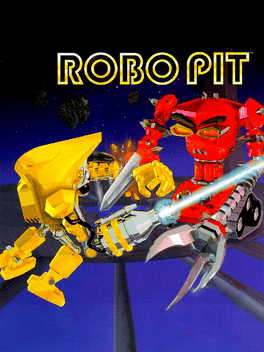Most Popular Nintendo 64 Games - Page 14
-
Jump Super Stars
2005
Jump Super Stars
2005
star 7.3Jump Super Stars is a 2D fighting game for the Nintendo DS. It was developed by Ganbarion and published by Nintendo. The game was released on August 8, 2005 in Japan and accompanied the release of a red Nintendo DS. A sequel, Jump Ultimate Stars, was released in Japan on November 23, 2006. -
Arcana Heart 3: Love Max!!!!!
2014
star 7.5With its own unique battle system and a wide selection of characteristic angels, the girls are appearing on Steam for the first time in Arcana Heart 3 LOVE MAX!!!!!!! -
Star Wars: Jedi Arena
1983
star 5.9In Jedi Arena, you have to face an opponent in the arena to see who is the true Jedi master. Wandering throughout the arena is a seeker which is capable of firing laser bolts. To be victorious you need to destroy your opponents shield by having the seeker fire laser bolts at it. You are armed only with a light saber which is used to control the direction of the laser bolts you fire, as well as block incoming fire from your opponent. The first player to break through the other players shield wins a point, and the first player to 3 points wins the match! Several game options are included which control the speed of the seeker, or even make the seeker invisible. -
Transformers: Beast Wars Transmetals
1999
star 4.9Now, experience a Transformers battle you've never seen before! Take command of the Heroic Maximals and Evil Predicons as they struggle for supremacy! More powerful than ever, these cybertronian warriors can convert into 3 modes: beast, vehicle, and robot. Run, blast and transform your way to victory! Crush the competition with the awesome Ultra Blast attack! -
Fighters Uncaged
2010
Fighters Uncaged
2010
star 5.6Fighters Uncaged is a Kinect fighting game, using the player's body to trigger various martial arts attacks. Fight twelve different opponents in a brutal underground tournament. -
Melty Blood Re-Act
2004
-
Teenage Mutant Ninja Turtles: Tournament Fighters
1993
star 4.7The Genesis version uses the standard three-button controller, with only two buttons for attacking (punch and kick). To perform stronger punches or kicks, the player must hold the directional pad towards the opponent while pressing either attack buttons. The third button is used for taunting. Some of the stages in the game feature destroyable scenery that gives the player and their opponent access to new areas in the stage. As well as their special moves, each character has a 'killer' attack which is only accessible when they are close to death and the red part of the characters' life gauge at the top starts flashing. This is done by pressing the Taunt button in conjunction with a specific D-Pad motion. These moves nearly take out the other character's life gauge completely. The game has eight playable characters, which includes the four Turtles and Casey Jones, as well as April O'Neil (whose active role differs from the versions of the character featured in other games), Ray Fillet (a character from the Teenage M -
Bleach: Blade Battlers
2006
star 5.9Bleach ~Blade Battlers~ (BLEACH~ブレイド・バトラーズ~) is a video game for the PlayStation 2 and the first installment in the Blade Battlers series. -
Breakers
1996
Breakers
1996
star 6.7In Breakers, choose one of eight fighters who have their own moves and special attacks. There are eight stages in the game, and each stage has two battles. The object of each battle is to drain your opponent's energy in order to win the battle. If there is a draw, a third battle takes place. If the time limit expires, the player with the less energy loses the battle. Once you have completed all eight stages, you will face a opponent that is much tougher than previous ones. Different endings and in-game dialog are viewed depending on the character that you select. -
The King of Fighters EX2: Howling Blood
2003
star 6.8The King of Fighters EX2: Howling Blood is a fighting game released by Playmore, MMV and Sun-Tec for the Gameboy Advance. It is based on The King of Fighters 2000 and is the sequel of The King of Fighters EX. It was also ported for the N-Gage as The King of Fighters Extreme. Like its predecessor, The EX series takes place in an alternate timeline where the events of the NESTS Saga did not occur, as Kyo Kusanagi was found by Moe Habana rather than NESTS at the end of KOF '97, thus this game took place instead of KOF 2000 in the EX continuity. -
YuYu Hakusho: Sunset Fighters
1994
star 6YuYu Hakusho: Makyou Toitsusen is a 1994 fighting game for the Sega Mega Drive by Treasure made with the Yu Yu Hakusho license — the second such game, after Nextech's adventure game Yu Yu Hakusho Gaiden. Interestingly, TecToy published the game in Brazil as YuYu Hakusho: Sunset Fighters, however the game has not been released elsewhere. M.I.J.E.T. fan-translated the game to English in 2007. The game is a 4-player fighting game. A and B attack and C blocks, with various combos along the way. Up jumps. -
Inuyasha: A Feudal Fairy Tale
2002
star 6.1Inuyasha: A Feudal Fairy Tale is a 2D fighting game starring characters from Rumiko Takahashi's manga and animé series, Inuyasha. The story centers around 15-year old high school student Kagome Higure, who inadvertently slips back in time to feudal Japan, where she becomes embroiled in a quest to locate shards of the Sacred Jewel of the Four Souls. "Feudal Fairy Tale," the game's main mode of play, follows this escapade and requires players to engage in a series of battles and mini-games in order to obtain the coveted shards. Initially, only Kagome and her half-demon companion Inuyasha are playable, but as players journey through the game, acquiring shards, more characters become available. Each character is able to perform both strong and weak attacks, as well as throws and counter attacks. Players can also execute more powerful combination maneuvers, including special and super attacks, which can only be initiated when the Spiritual meter is filled. Additionally, specific attacks can cause opponents to drop sha -
Cyberbots: Fullmetal Madness
1995
star 6.2The premise in Cyberbots is similar to Armored Warriors, albeit it features only a maximum of two playable characters on screen as opposed to three. Cyberbots is a very innovative game, attributed to its amount of selectable options, parts, and mecha that permit the player to format their play style to their preference. Similar to the Armored Core series, different legs (which affect movement abilities), arms (which affect reach and melee capabilities) and weapons can be mixed and matched between the selectable robots available to the player. Gameplay in Cyberbots is similar to other Capcom-created fighting games, with a medium-sized command list of executing various attacks available to each individual robot. Battles are a duel-formatted affair with players and the computer fighting against one another to proceed to the next battle. -
Doomsday Warrior
1992
Doomsday Warrior
1992
star 4.9The Doom Squad is a group of fighters under the control of an evil wizard. They threaten earth and bring destruction. One of the Doom Squad members betrays his group and becomes the Doomsday Warrior. This warrior must then defeat the other members of the Squad and finally the wizard controlling it all. Doomsday Warrior is a fighting game. Choosing one of the Doom Squad members to become to the Doomsday warriors, you must defeat your opponents. Each character has the ability to punch, kick, jump and unleash a special move (usually by being close to the enemy and using either jump, kick or punch). The better the skill in fighting, the more ability points are earned. These ability points can be used to improve various areas of the fighter after battle. -
Ballz 3D
1994
Ballz 3D
1994
star 5.6Ballz 3D is a two player 3D action fighting game for the Sega Mega Drive/Genesis, the Super NES (SNES) and the 3DO. It was developed by PF Magic and published by Accolade in 1994. The 3DO version was released as a director's cut in 1995. Ballz offered three difficulty levels over a total of 21 matches. Its distinguishing quality was that each of the characters were composed completely of balls, with a pseudo-3D look. -
Street Fighter II: Rainbow Edition
1992
star 6.9This game is a hack of Street Fighter II: Champion Edition, notable for modifying many gameplay aspects, the most noticeable being the ability to transform into other characters and being able to pull off special moves in midair. Some of the special moves were modified, such as the Hadokens, which can either home in on the opponent or travel extremely fast, as well as 7 different characters being able to execute them as opposed to just Ryu and Ken. Zangief moves noticeably faster in this game, and E. Honda can pull off Hadokens when performing his Hyakuretsu Harite. The graphics and music are identical to those in the original game aside from the title's logo, which is now rainbow-coloured, which is where this hack gets its name from. Although there are many different revisions of this hack readily dumped and emulated, several versions are still left undumped. The rampant craziness with these hacks and the popularity of arcade distributors putting these hacks in machines was one of the reasons behind the creatio -
Street Fighter EX2
1998
Street Fighter EX2
1998
star 7.6The original version of Street Fighter EX2 retains all the features from the previous game, Street Fighter EX Plus, including original features such as "Guard Breaks" (unique moves which cannot be blocked by an opponent) and "Super Canceling" (the ability to cancel a Super Combo into another Super Combo). The primary new feature in the game are "Excel Combos", ("excel" being abbreviation for "extra cancel"). Much like the "Custom Combos" featured in the Street Fighter Alpha series, Excel Combos allows player to connect a series of basic and special moves for a limited time. During an Excel Combo, the player begins with a basic move and can follow up with a different basic move or follow-up a basic move with a special move, which can be followed by a different special move. However, the player cannot connect any move with the same move, nor can they cancel special moves into basic moves during an Excel Combo. -
Red Earth
1996
Red Earth
1996
star 7Red Earth is a fantasy-themed 2D competitive fighting game released by Capcom as a coin-operated video game in 1996. Red Earth is the only CPS III video game which has never been officially ported to home platforms, although its characters have appeared in later Capcom games. -
Cardinal Syn
1998
Cardinal Syn
1998
star 5.8What began as a simple prophecy evolved into bloody war. A board of fantasy warriors in an epic story of a war-torn land. Battle it out with an arsenal of weapons including battle axes, broadswords, crossbows and more! Deadly interactive 3-D environments - dodge fire-pits, flying arrows and spike-lined walls forcing fighters to kill or be killed. 8 main characters with a further 10 hidden characters waiting to be unleashed! -
Robo Pit
1996
Robo Pit
1996
star 7.2Robo Pit is an arena fighter, plain and simple. Well, maybe not so simple. When you start your game, you have to build your mechanical gladiator; choosing the color, body, eyes and legs. While most of your starting choices are purely cosmetic, the legs you choose do slightly affect your game by changing the speed and mobility of your fighter, as well as its special attack.


